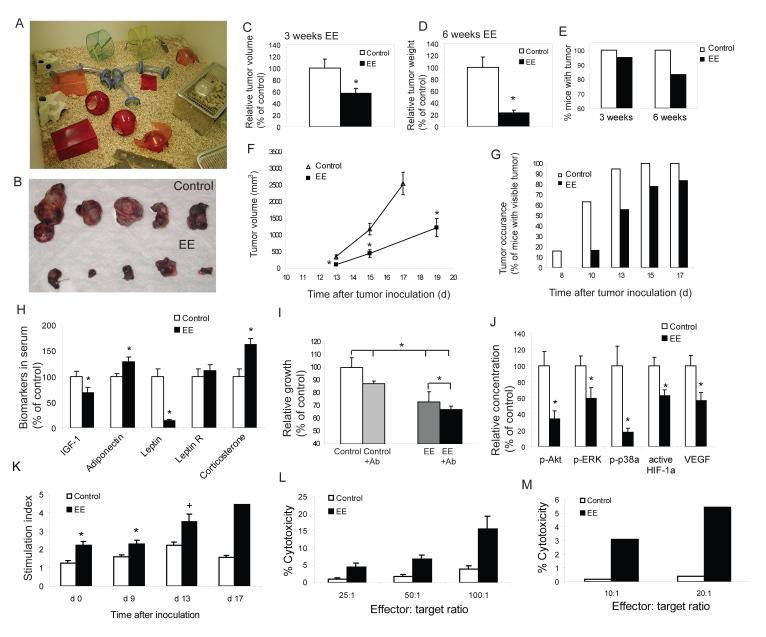Figure 1. Enriched environment reduces tumor growth and affects biomarkers in serum, B16 melanoma cell proliferation in vitro, signaling pathways in the tumors and immune functions.
(A) EE cage. (B) Representative B16 melanoma dissected d 17 after inoculation of 105 cells per mouse. Mice were housed in the EE or control cages for 6 w prior to tumor inoculation. (C) Three weeks of EE decreased tumor volume d 19 after inoculation (n=20 in each group, * P<0.05). (D) Six weeks of EE further reduced tumor weight d 17 after inoculation (n=18 in each group, * P<0.05). (E) EE induced complete tumor resistance in a subset of mice. All control mice showed visible tumors. (F) Four weeks of EE decreased tumor growth rate (n=20 in each group, * P<0.05). (G) Four weeks of EE delayed the occurrence of tumor. (H) EE effects on biomarkers in serum. Sera were collected before tumor inoculation in the 6 week EE (n=20 in each group, * P<0.05). (I) B16 cells grew more slowly when cultured with serum from EE mice compared to control mice while pretreatment with leptin neutralizing antibody inhibited the effect of serum on B16 cell growth (n=4 in each group, * P<0.05 between groups as indicated). (J) Phospho-Akt1 (S473), ERK1 (T202/Y204)/ERK2 (T185/Y187), Phosphop38α (T180/Y182), active HIF-1α activity and VEGF concentration were significantly reduced in tumors from EE mice compared to control mice (n=7 in each group, * P<0.05). (K) The proliferative response of splenic lymphocytes to ConA was increased in EE mice before and after tumor inoculation (n=5 in each group at each time point, * P<0.05, + P=0.054). (L) NK cytotoxicity was higher in EE mice (n=5 in each group, P<0.05) before tumor inoculation. (M) CD8 T cell cytotoxicity was higher than control mice (bar represents a pool of 4 mice in each group, P<0.05).Values are means ± SEM. See also Figure S1.

